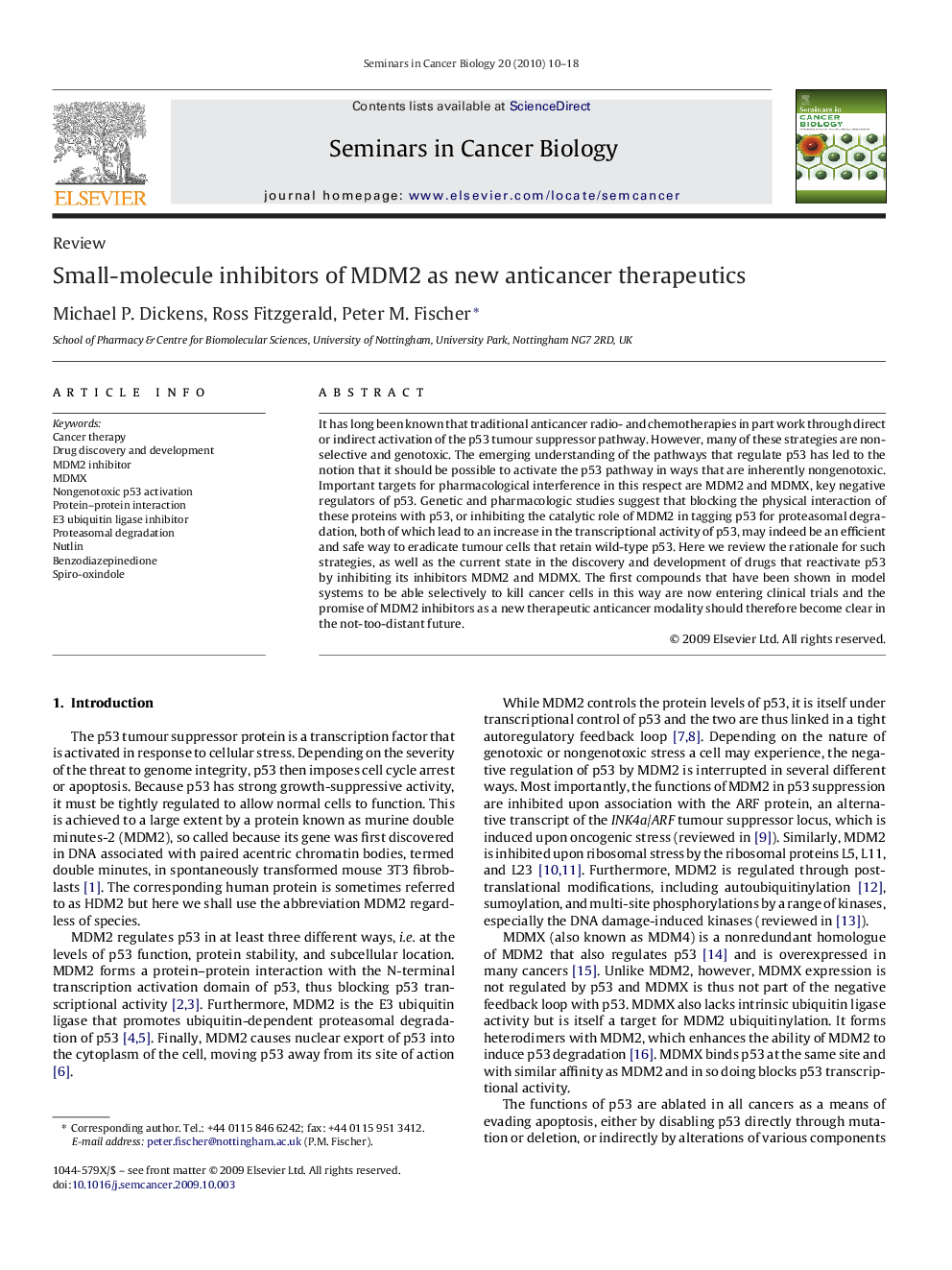| Article ID | Journal | Published Year | Pages | File Type |
|---|---|---|---|---|
| 2023989 | Seminars in Cancer Biology | 2010 | 9 Pages |
It has long been known that traditional anticancer radio- and chemotherapies in part work through direct or indirect activation of the p53 tumour suppressor pathway. However, many of these strategies are nonselective and genotoxic. The emerging understanding of the pathways that regulate p53 has led to the notion that it should be possible to activate the p53 pathway in ways that are inherently nongenotoxic. Important targets for pharmacological interference in this respect are MDM2 and MDMX, key negative regulators of p53. Genetic and pharmacologic studies suggest that blocking the physical interaction of these proteins with p53, or inhibiting the catalytic role of MDM2 in tagging p53 for proteasomal degradation, both of which lead to an increase in the transcriptional activity of p53, may indeed be an efficient and safe way to eradicate tumour cells that retain wild-type p53. Here we review the rationale for such strategies, as well as the current state in the discovery and development of drugs that reactivate p53 by inhibiting its inhibitors MDM2 and MDMX. The first compounds that have been shown in model systems to be able selectively to kill cancer cells in this way are now entering clinical trials and the promise of MDM2 inhibitors as a new therapeutic anticancer modality should therefore become clear in the not-too-distant future.
